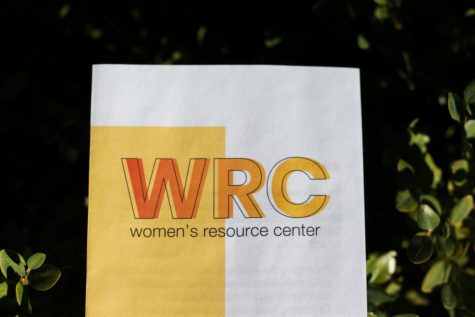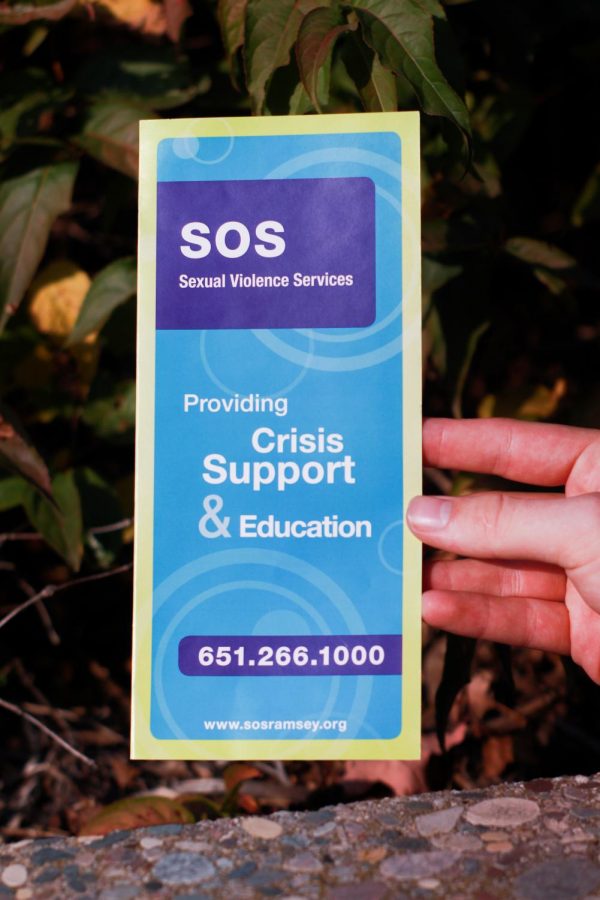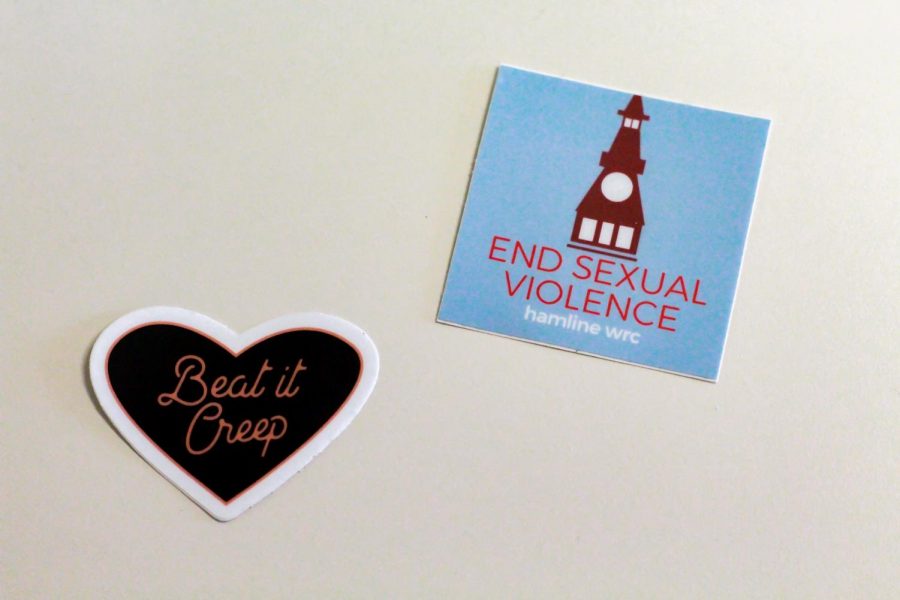The Women’s Resource Center raises awareness for Domestic Violence
CONTENT WARNING: This story references domestic violence and sexual assault. The Women’s Resource Center raises awareness for domestic violence while the weight of COVID-19 cases skyrockets.
Ali Kimball
Stickers from the WRC can be found stuck around campus, helping spread awareness to
end sexual violence.
October 14, 2020
As October continues on, the Women’s Resource Center (WRC) is figuring out ways to educate students during Domestic Violence (DV) Awareness Month. This advocacy is more important than ever as cases of violence skyrocket in the U.S. and Minnesota as the conditions of the COVID-19 pandemic force many to stay home. The WRC is hoping to raise awareness by focusing on ending stigma, educating students on what DV looks like and providing resources for students in need of assistance.
DV encompasses a variety of different forms of abuse. The National Coalition Against Domestic Violence defines DV as “the willful intimidation, physical assault, battery, sexual assault and/or other abusive behavior as part of a systematic pattern of power and control perpetrated by one intimate partner against another.”
According to the National Coalition Against Domestic Violence in 2010, 1 in 4 men and 1 in 3 women in the U.S. have experienced some form of physical violence by an intimate partner. In Minnesota, 23.5 percent of men and 33.7 percent of women experience intimate partner physical violence, intimate partner rape and/or intimate partner stalking in their lifetimes.
“Because of COVID we are seeing increases in domestic violence and intimate partner violence…[as] COVID is just exacerbating existing problems,” said Jen England, Faculty Director for the WRC.
This is why this year’s efforts to raise awareness comes with a heavy call. The WRC is attempting to get more creative in their efforts.
“People are really zoomed out,” England said.
As the team is brainstorming non-traditional ideas, such as using art, their focus lies heavily on de-stigmatizing DV.

A Women’s Resource Center pamphlet provides information on services, programming, educational materials and supplies made available by the WRC.
“I think most people don’t want to believe that they would ever find themselves in that situation. That they would get out, they would never let a partner or other family member do that to them,” England said.
Yet in 2018, two professors at Baylor University studied the presence of DV with college students.
This study found that because of the social environment in which they live and interact with other students, they are a vulnerable population for DV.
The WRC is also focusing on educating students on the signs commonly identified in DV situations.

A Women’s Resource Center pamphlet provides information on services, programming, educational materials and supplies made available by the WRC.
“[Education] can help you identify what are some of the signs [of DV]…and what…a healthy relationship looks like,” England said. They also emphasize resources to those involved in DV situations, such as creating a plan for safety and local counseling services.
As the WRC speaks out this month regarding DV, their overarching goal is to bridge the gap by creating a safe space for all students to learn and seek help for themselves or loved ones that may need support. This information can be life-saving and England asks all students to educate themselves about DV.
If this is you or you want direction on how to help a loved one, please call the National Domestic Violence Hotline (1.800.799.SAFE).
To learn more follow the WRC on Instagram @huwomensresourcecenter.
Sources for this article include the National Coalition Against Domestic Violence, the National Center for Injury Prevention and Control, the Department of Health, Human Performance, and Recreation at Baylor University.

